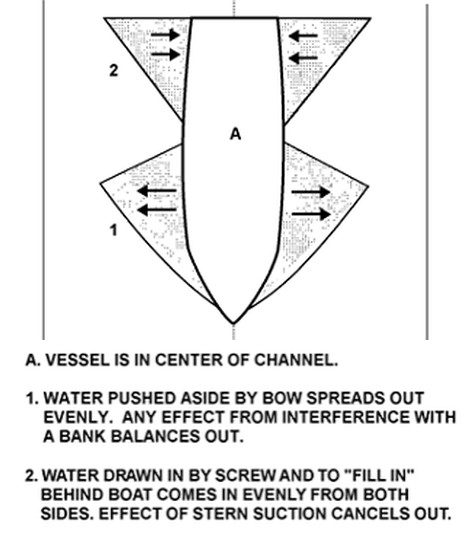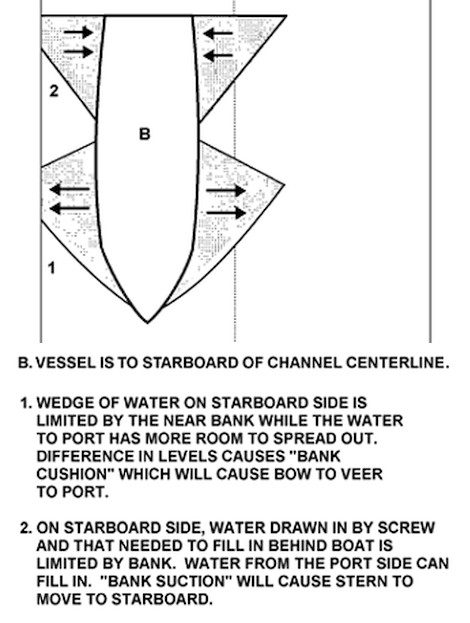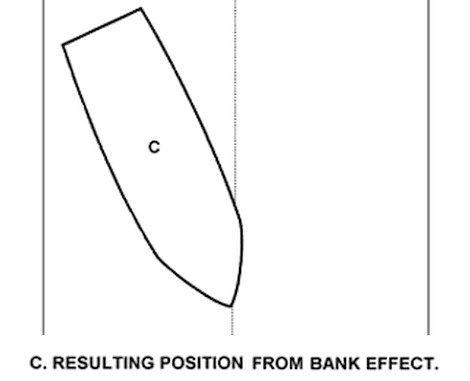 By Bob Currie, Recreational Boating Safety Specialist
By Bob Currie, Recreational Boating Safety Specialist
U. S. Coast Guard Auxiliary Station Galveston Flotilla
Character is defined as a trait, quality or high moral code. Good character can be developed. Apt is defined as quick, prompt, ready, and being able to respond without delay. In order to be a good boater, you must develop good boating character, which I call aptability. Aptability is not a real word, but it sounds like it could be. So I am going to use it to describe what makes good boating character so that you may judge for yourself whether you already have good boating aptability or whether you need to develop it. You should perform a self assessment of your boating aptability often.
Good Boating Aptability is Being Quick
Quick has two definitions. The first definition is “moving or doing something in a short time.” That is not what we mean here. The second definition is “prompt to understand, think, or learn; keenly perceptive.” That is what we mean. A good mariner has a good sense of situational awareness specific to operation on the water. He recognizes situations that could affect the operation of his vessel, weighs his options, and acts accordingly. A keenly perceptive mariner will recognize developing situations before they adversely affect him. The situations I am talking about include interactions with other vessels, particularly in meeting, passing, and crossing situations. Those are situations that can lead to a collision. For instance, suppose you have a boat following you in a narrow channel.
How quickly do you realize that you are being followed by a boat that will soon take a passing position? If a boat is half a mile behind you and moving say, 60 mph while you are cruising at 30 mph, the following boat’s closing time to reach your boat is 60 seconds. It’s as if you were standing still and the following boat was running 30 mph, which is two minutes to the mile. With only half a mile to cover, that is 60 seconds. If the boat was following you at a quarter mile behind, that is 30 seconds to recognize the situation and decide on a course of action, whether it be to stand on (keep your course), move over to allow an easier pass, or take any other action necessary to avoid a collision. The quick mariner is one who knows when another vessel is following and who gauges the situation clearly and correctly and acts accordingly. In regard to the situation above, you might ask yourself if you are paying enough attention to what is going on or could be going on behind your boat. Don’t become complacent when you are cruising and holding a steady heading. A following boat could slip up behind you before you realize it. The sooner you recognize a following situation the more time you have to formulate any response. This goes for meeting and crossing situations also.
Good Boating Aptability is Being Prompt
Promptness is how soon you recognize a situation that could affect the operation of your boat and how soon you react to that situation. Promptness is about the appropriate timing of your action. Along with the concept of promptness are the concepts of too soon and too late. All three concepts may be illustrated by a manuever performed dozens of times daily in the Houston Ship Channel. It is called the Texas Chicken, and promptness is the key to successfully performing this maneuver. This is about two ships meeting in a narrow channel. I liken this to two cars meeting on a one-lane road. In the automobile situation, the cars will continue towards each other then at the last second each car will take to the shoulder of the road so they can pass. The “chicken” part of the manuever is to see how long the cars can continue toward each other in a collision path. The first one to swerve to the shoulder loses a game of chicken (although they do save their vehicle).
The situation above is closely related to the Texas Chicken manuever performed by two ships. The ships, however, are not playing a game. They are performing a manuever that has developed over time. The ships will navigate down the center of the narrow ship channel until they are about one mile from each other. At that time the helmsmen will will turn their wheels to Full Right Rudder. This will cause each ship to head toward their starboard bank. The bank in this case is the side of the deep part of the ship channel, which is the shallow water portion of the channel. The idea is to move over just in time to pass the other ship. If you move over too soon you set up forces that will pull the stern in to the bank while pushing the bow back out into the middle of the channel. If you perform the manuever too soon then your bow will be stick out into the channel and the boat you are meeting stands a good chance of hitting it. At about half a mile away the helmsman will center the helm and the ship will straighten up to the side of the channel. If the helmsman makes the second part of the manuever too soon then the forces set up by the manuever will push the bow back out into the middle of the channel.
The Texas Chicken Manuever is the best illustration of promptness. Promptness is all about doing something at the appropriate time. Promptness can be as simple as turning your engine to full left and reversing your engine when easing into a dock on your port side. That manuever will straighten your bow to be parallel with the dock while sucking your stern in toward the dock, resulting in the boat coming alongside the dock with the bow and stern ending up equidistant from the dock. You can tell when a boat operator knows what they are doing when they approach the dock. I always appreciate seeing someone make this manuever.
The other two concepts, too soon and too late, are scenarios that the apt mariner works to avoid. A final example of too soon concerns an old friend who was a famous aviator. He crashed his Mooney low wing single engine plane on takeoff. I asked him what happened. He said he raised his landing gear too soon. Ah. That would do it. Too late a reaction can cause damage to your vessel and injury or death to a passenger. Part of your analysis of a situation should include asking yourself what could happen if you don’t take a particular action.
Maneuvering a ship to the side of a channel.



The above drawing shows what happens if a ship that is performing the Texas Chicken begins the maneuver too soon. If done at the appropriate time the wave action from the bows of the ships keeps their bows apart while the sterns are sucked toward the side of the ship channel, resulting in the two ships being correctly lined up in the channel as they pass each other.
Good Boating Aptability is Being Ready
Ready is defined as being in a suitabe state for an activity, action, or situation; fully prepared. Readiness has both mental and physical components. The apt mariner is able to gauge his or her own readiness. The mental aspect of readiness concerns training, knowledge, and mental clarity. You are not ready if you are tired or, Heaven forbid, inebriated. You are not ready if you are distracted by unrully passengers or by people moving about the boat while underway. The physical aspects of being ready include being fit enough to launch your boat, operate it under the prevailing conditions, and being able to trailer your boat when through. The apt mariner can handle more than the prevailing conditions both mentally and physically. You never know when a severe storm can suddenly appear and make routine handling of your boat a nightmare.
Good Boating Aptability is Being Able to Respond Without Delay
In the movie “Men in Black,” there is a scene where the Will Smith character, James Edwards, is auditioning with other highly trained military personnel for a position with the Men in Black. They are given semi automatic pistols and as the lights turn on in the room the men begin firing at alien life form cutouts. Edwards fires only one shot, shooting “little Tiffany.” Zed says, “Edwards, what in the hell happened?” Edwards says, “Hesitated.” But it turns out that the aliens were the good guys and the real threat was little Tiffany. What does this mean? It means that sometimes hesitation to allow you to fully assess a situation is the appropriate response. To respond without delay can mean to divert your attention to the emerging situation at hand. Shooting and then asking questions later can be a course of action, but it most certainly is not appropriate for the apt mariner. Responding without delay is most important when recognizing that another vessel is on a collision course with your boat. Actions to avoid collision should be appropriate and timely, and may consist of altering course or even coming to a stop.
Summary
Boating aptability is an important characteristic of being a good recreational boater. The apt boater has good training, knowledge and experience, and uses those traits at all times when underway. Complacency is the enemy of safe boating. You should strive at all times to keep abreast of activities around or near you that could affect the operation of your boat. Attending a safe boating course won’t make you a better boater. It is using what you were taught that makes you an apt mariner.
For more information on boating safety, please visit the Official Website of the U.S. Coast Guard’s Boating Safety Division at www.uscgboating.org. SAFE BOATING!
[BC: Jan-10-2023]

 Posted in
Posted in 























